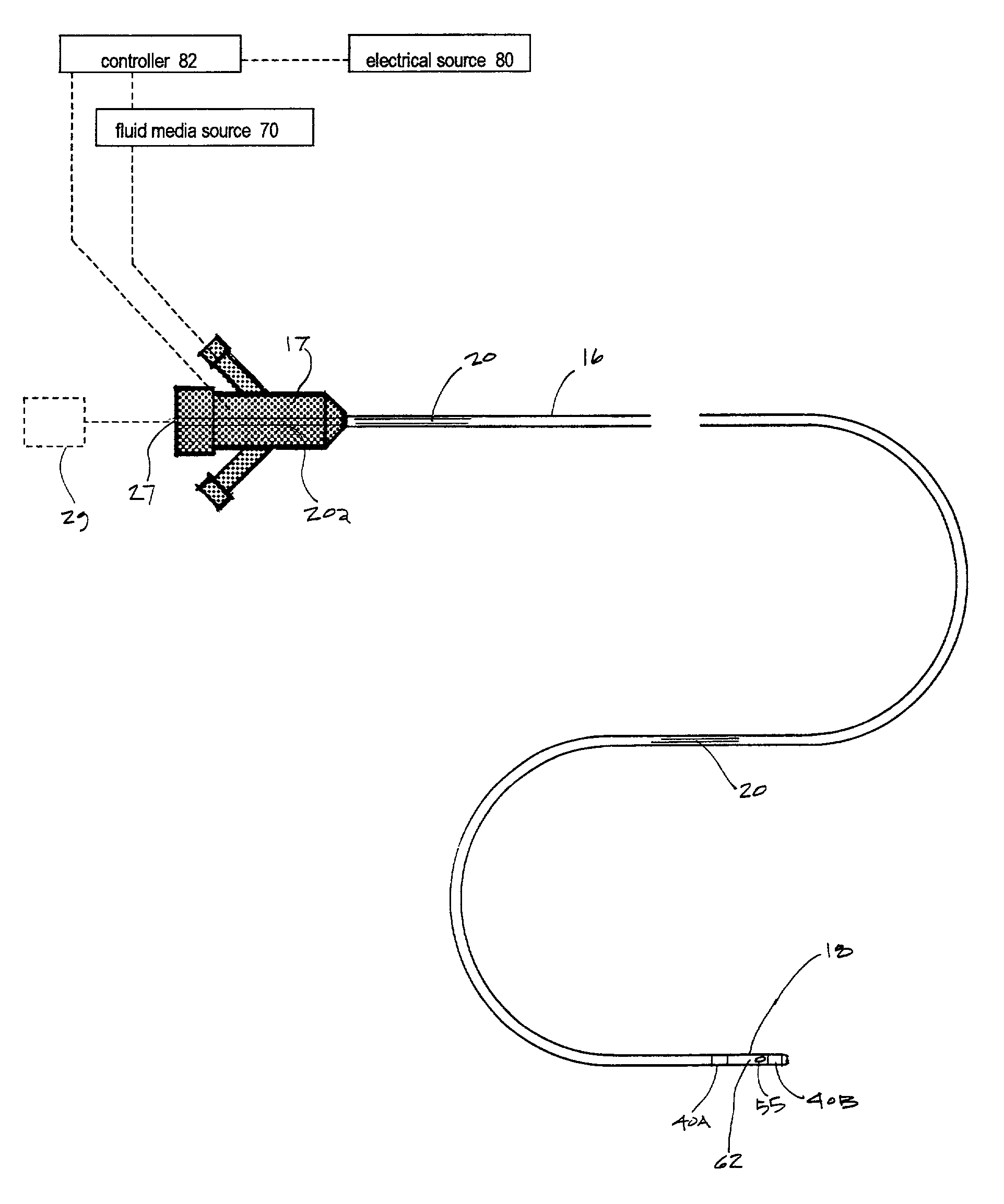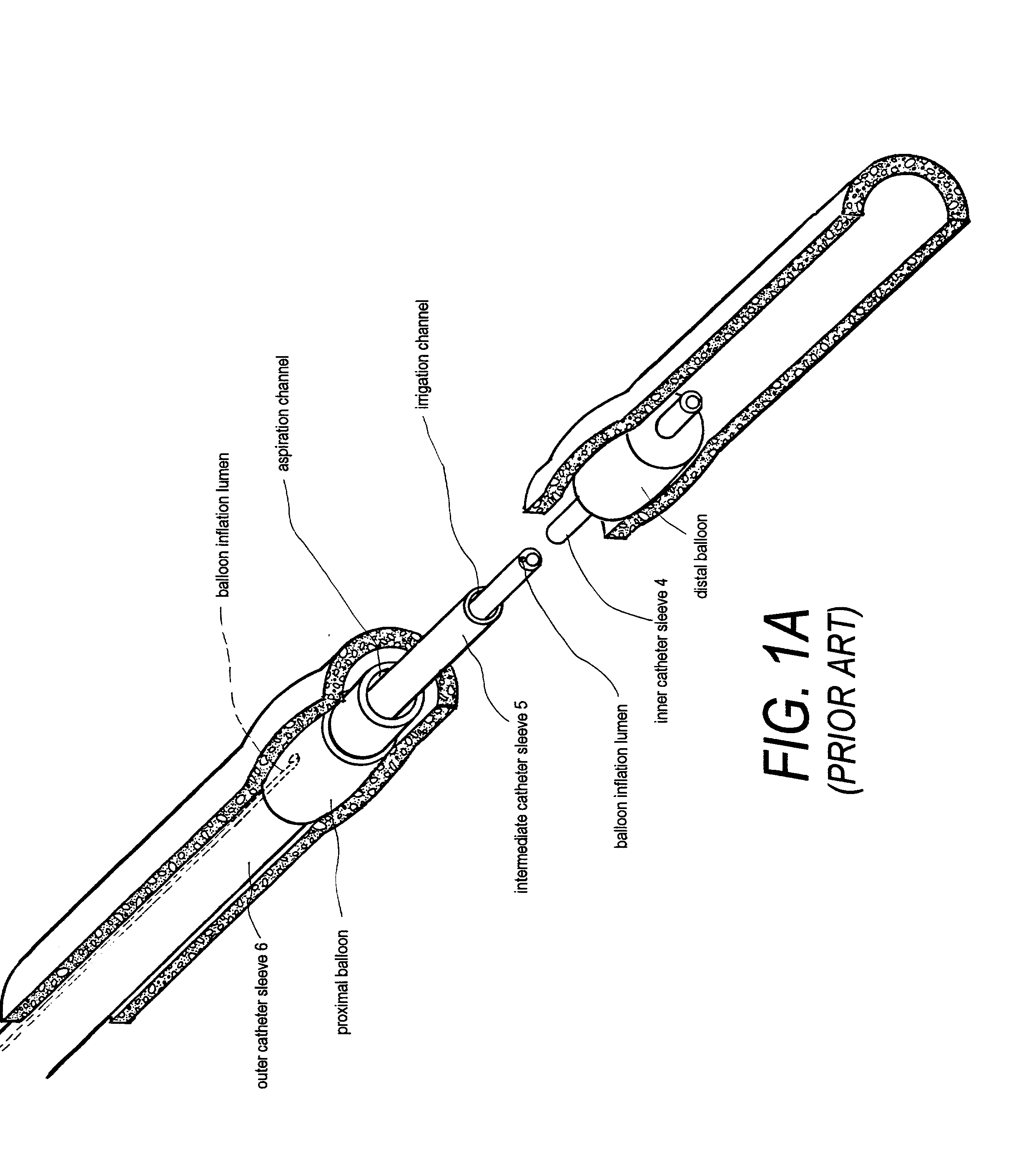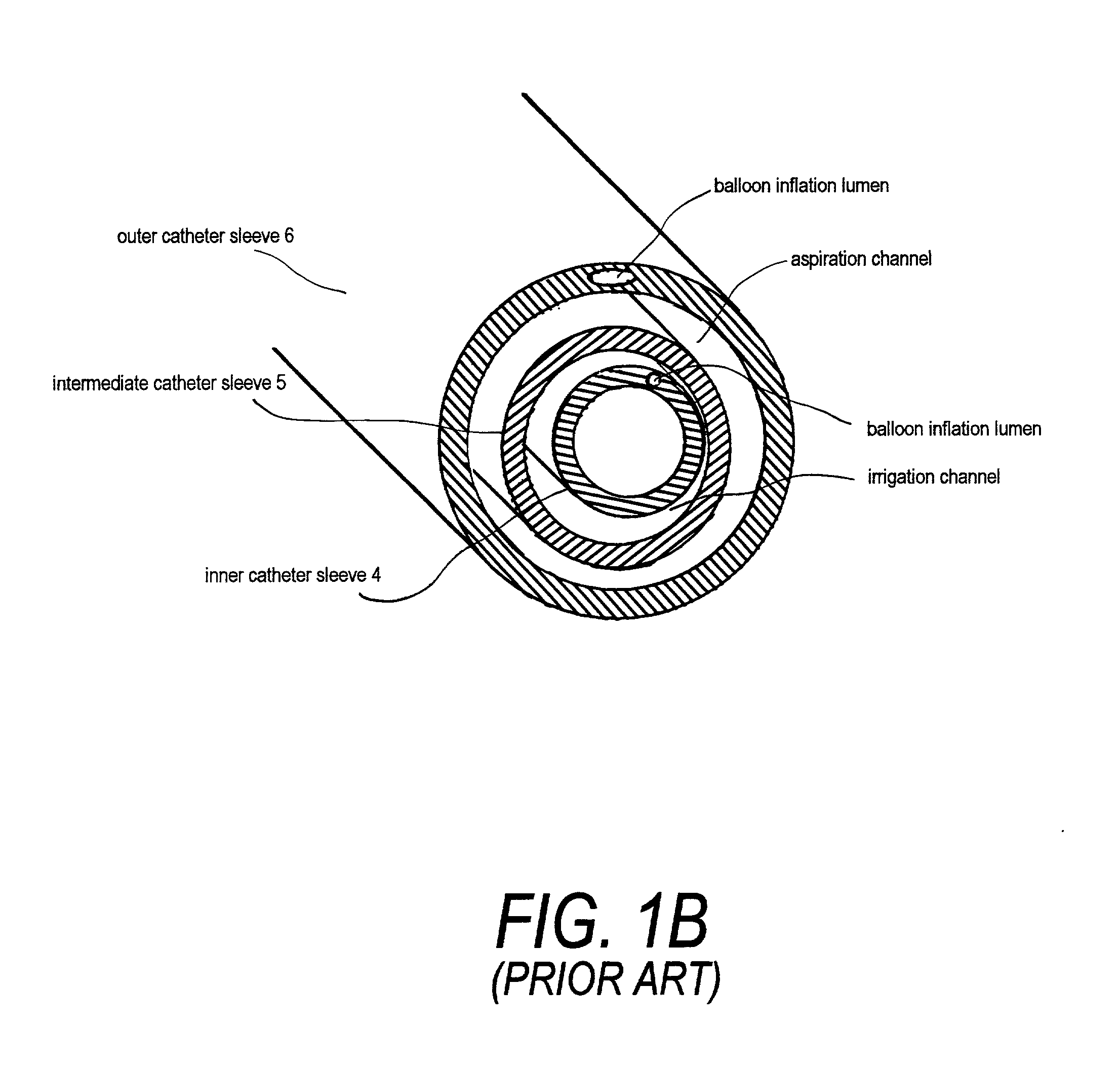Electrical discharge catheter system for extracting emboli in endovascular interventions
- Summary
- Abstract
- Description
- Claims
- Application Information
AI Technical Summary
Problems solved by technology
Method used
Image
Examples
Embodiment Construction
[0065] I. Principles Relating to Extraction and Emulsification of Emboli Based on Pressure Differential
[0066] Daniel Bernoulli, an eighteenth-century Swiss scientist, discovered that as the velocity of a fluid increases, its pressure decreases--often called Bernoulli's Law. The catheter system according to the present invention utilizes a micro-electrical discharge system for providing high repetition rate discharges in small channels (herein termed a microchannel structure) in a catheter working end to create high velocity fluid flows as a novel means of exploiting Bernouilli's Law for medical therapeutic purposes. The high velocity fluid flows created by the invention, together with selected levels of turbulence generated by such fluid flows, are adapted for use in catheter-based medical interventions in a very small endoluminal working spaces. More in particular, the invention utilizes a sequence of electrical discharges for the purposes of: (i) creating a pressure differential t...
PUM
 Login to View More
Login to View More Abstract
Description
Claims
Application Information
 Login to View More
Login to View More - R&D
- Intellectual Property
- Life Sciences
- Materials
- Tech Scout
- Unparalleled Data Quality
- Higher Quality Content
- 60% Fewer Hallucinations
Browse by: Latest US Patents, China's latest patents, Technical Efficacy Thesaurus, Application Domain, Technology Topic, Popular Technical Reports.
© 2025 PatSnap. All rights reserved.Legal|Privacy policy|Modern Slavery Act Transparency Statement|Sitemap|About US| Contact US: help@patsnap.com



